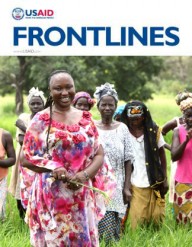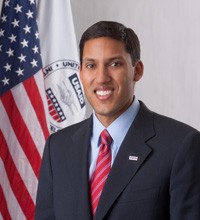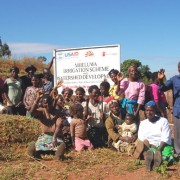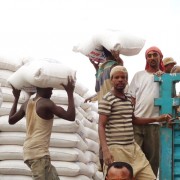Since the dawn of humanity, extreme poverty has stifled hopes and undermined growth.
It haunts the world still. Tonight, 860 million people will go to sleep hungry. This year, 6.6 million children will die before their 5th birthday. Every day, 1.1 billion people around the world—more than the population of North and South America combined—live on just $1.25 a day. No matter how much you adjust for the relative price of local commodities, that is a desperately meager sum, and with it, families must make daily choices among food, medicine, housing and education.
Every decision is a trade-off with potentially catastrophic consequences. Do you buy medicines for a sick parent, provide an evening meal for your children, or put a few pennies away towards a new roof or next year’s school fees?
As appalling as this description is, it still does not adequately describe what poverty is and what poverty does. It drains our basic human dignity. If we’re being honest, it sometimes also drains our compassion for those who suffer.
Yet, we know it doesn’t have to be this way.
From 1990 to 2010, the number of children in school grew to nearly 90 percent, and around 2 billion people gained access to clean water. More than 45 new democracies came into existence, including 13 in sub-Saharan Africa alone. Child mortality rates have fallen by 42 percent and poverty rates by 52 percent. And lest you think this is a phenomenon largely confined to China, consider what happened in 2005, when—for the first time on record—poverty rates began falling in every region of the world, including Africa.
For the first time in history, we stand within reach of a world that was simply once unimaginable—a world without extreme poverty. We now have a roadmap out of extreme poverty that is driven by broad-based economic growth and clear, transparent democratic governance.
Last year, in a powerful moment, President Barack Obama called on Americans in his State of the Union address to help eradicate extreme poverty in the next two decades. This vision was echoed in the final report of the High-Level Panel on the Post-2015 Development Agenda, led by U.N. Secretary General Ban Ki-moon and the leaders of Indonesia, Liberia and the United Kingdom. The report outlined a limited number of measurable goals to focus the efforts of the entire global community on this great moral aspiration.
We know that we cannot pay our way out of extreme poverty. Instead of trying to deliver results with our dollars alone, we need a new model of development that creates public-private partnerships that deliver measurable results.
In Ethiopia, we’re working with DuPont to build a seed distribution system to reach 30,000 smallholder maize farmers and increase productivity by 50 percent. In the Philippines, we have joined with Qualcomm to strengthen the reporting process at clinics and hospitals using 3G mobile technology. In 10 Southeast Asian countries, we’re partnering with companies like Hewlett-Packard and General Electric to grow more than 1,000 small businesses and connect them to the global supply chain.
Embracing President Obama’s call to end extreme poverty is not about pursuing one set of activities at the exclusion of all others—or going about it alone.
It is about recognizing that we are at our strongest when we bring the generosity and imagination of the American people to bear on the greatest challenges of our time. It is about working across agencies, sectors and borders to work towards an unprecedented world—a world without extreme poverty.













Comment
Make a general inquiry or suggest an improvement.